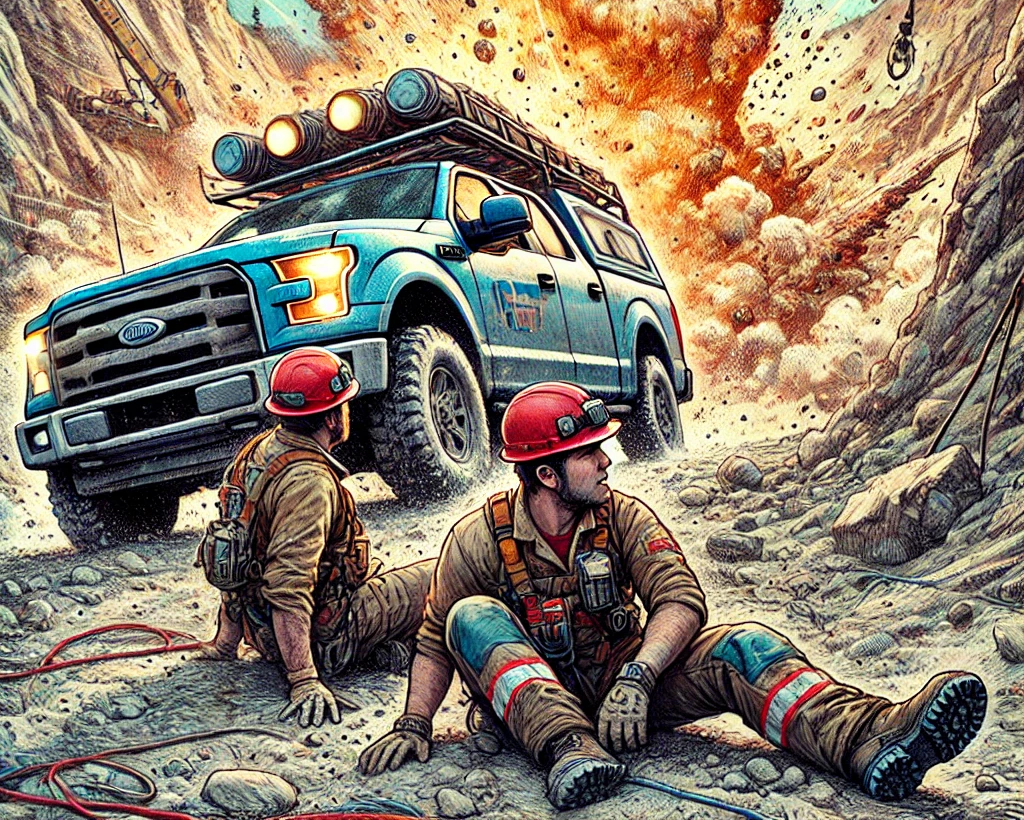When the Earth Moves Beneath You
 Working on a seismic dynamite crew wasn’t your everyday job. It was two of us, out in the rugged terrain, setting off charges to help map the earth’s underground secrets. We’d drive from one drilled 75-foot hole to another.
Working on a seismic dynamite crew wasn’t your everyday job. It was two of us, out in the rugged terrain, setting off charges to help map the earth’s underground secrets. We’d drive from one drilled 75-foot hole to another.
We carefully lowering 5-pound torpedo-shaped charges deep into the ground. Using long 10-foot sticks, we’d push the explosives down, one section at a time, making sure the wires attached stayed intact.
Once the charge was in place, we’d connect the wires to a radio and retreat behind our truck, a good 20 to 25 feet away. From there, we’d signal the command center—known as the "doghouse"—letting them know we were ready. When they sent the firing tone through the radio, the charge would ignite, sending a shockwave through the earth. Sometimes, water or geysers would shoot up from the hole. We’d watch, note the results, then move on to the next hole, repeating the process again and again.
But one time, things didn’t go as planned. A charge didn’t stay down—it floated back to the top, and we had no idea. We took cover behind the truck as usual, unaware of the danger. The doghouse sent the detonation signal. The ground beneath us surged like a wave, lifting the truck and both of us off the ground. The impact rattled our bones, and before we could catch our breath, dirt and debris rained down like a heavy storm. When the dust cleared, we peeked around the truck and saw it—a massive crater where the charge had gone off.
We weren’t hurt, but we stood there, stunned at what had just happened.
The Moral: Life, much like working with dynamite, is unpredictable. Sometimes, despite careful planning, things don’t go the way they should. The ground can shake, the unexpected can happen, and all you can do is hold on, get through it, and take a moment to appreciate that you’re still standing.
Life Chronicles
- When the Earth Moves Beneath You
- The Forgotten Tree
- Embracing the Challenge
- A Day on the Green
- Taking Care of Things
- Missy Lum Lum
- Trusting in Truth
- Rainy Days and Go Karts
- The Math Never Lies
- The Bus Ride Showdown
- Familiarity and Change
- Luck or Fate
- Winds of Adventure
- A Retreat to Remember
- Skilled Hands of Safety
- Let It Go, Let It Flow
- Mountain Top Camping
- The Powder Highway
